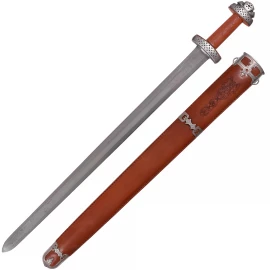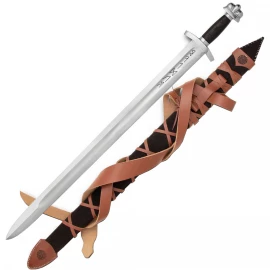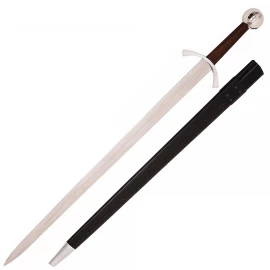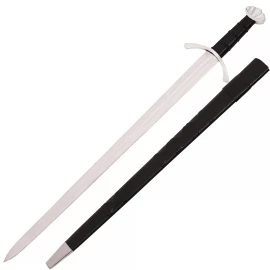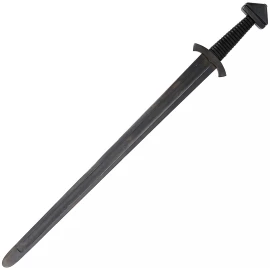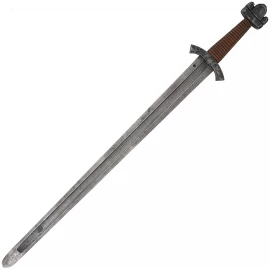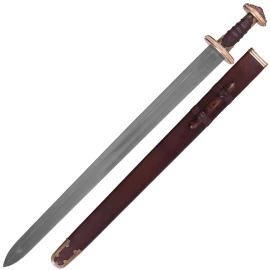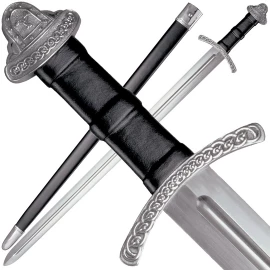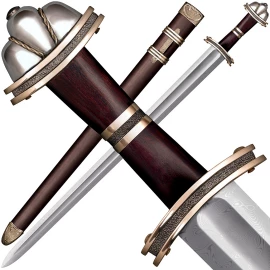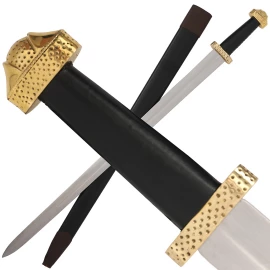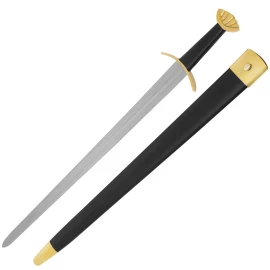Viking swords
The Viking swords is a form of spatha, evolving out of the Migration Period sword in the 8th century, and evolving into the classical knightly sword in the 11th century with the emergence of larger crossguards. Although called "Viking swords", this style of sword was not exclusively limited to Vikings and appeared throughout Europe during the Viking age.
Filter products
Viking swords
During the Viking age, Viking swords grew slightly in length to 93 cm (36.6") and took on a slightly more acute distal taper and point. These blades had deep fullers running their length, yet still had single-handed hilts which often sported a lobed or cocked-hat style pommel. The fuller was used to increase the strength and flexibility of the sword while reducing the weight of the sword at the same time. This weight reduction and flexibility would allow the wielder to swing faster and harder strokes while, at the same time, allowing the Viking swords to bend but not break when it hit bone. While the pattern of hilt and blade design of this time might readily be called "the Viking sword" to do so would be to disregard the widespread popularity Viking swords of this sort enjoyed. All over continental Europe between 700-1000 AD this design and its small variations could be found. Only the wealthier Viking goðar, jarls, and sometimes selected freemen wielded swords, while ordinary freeman tended to carry axes or spears.

